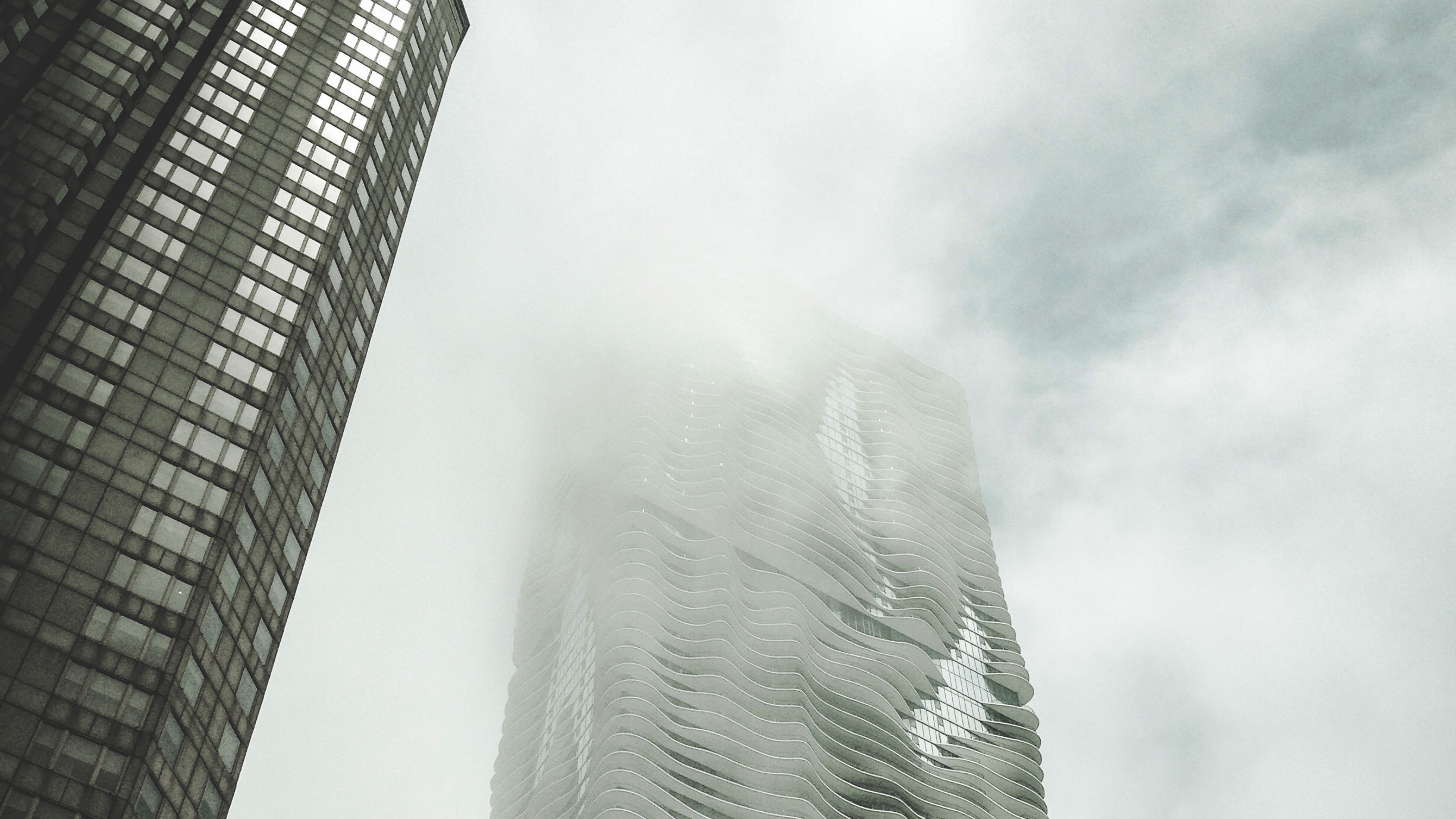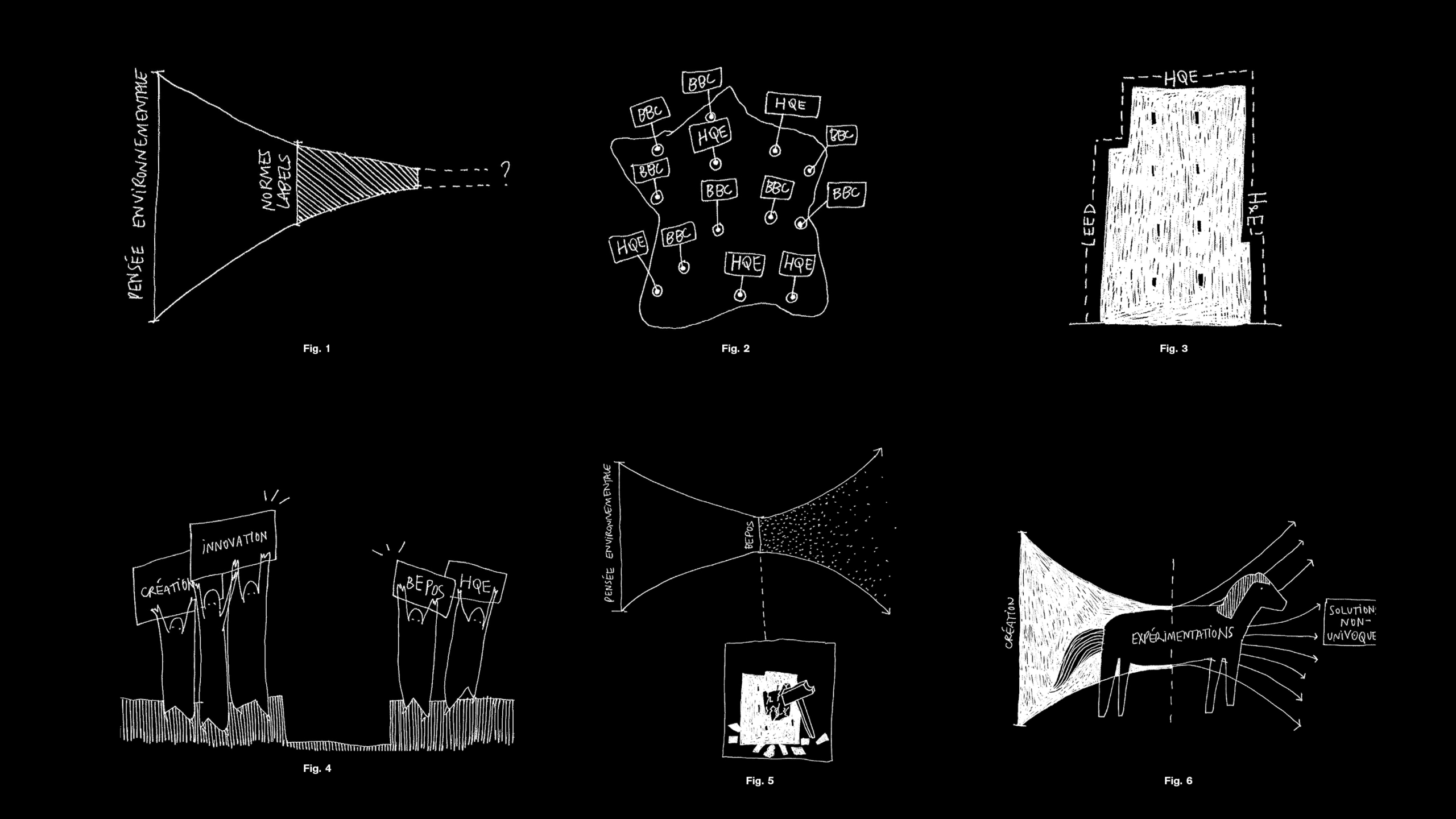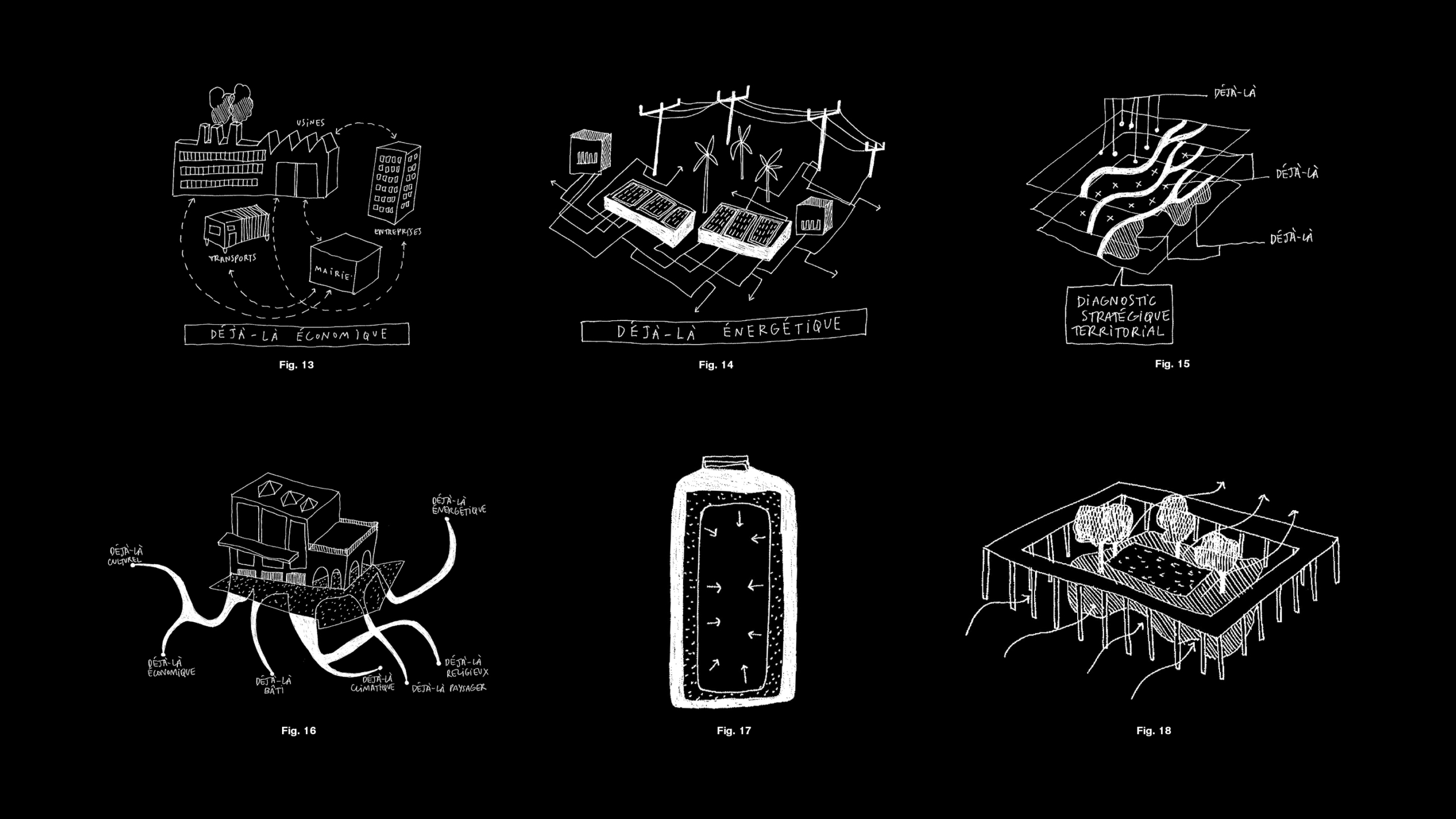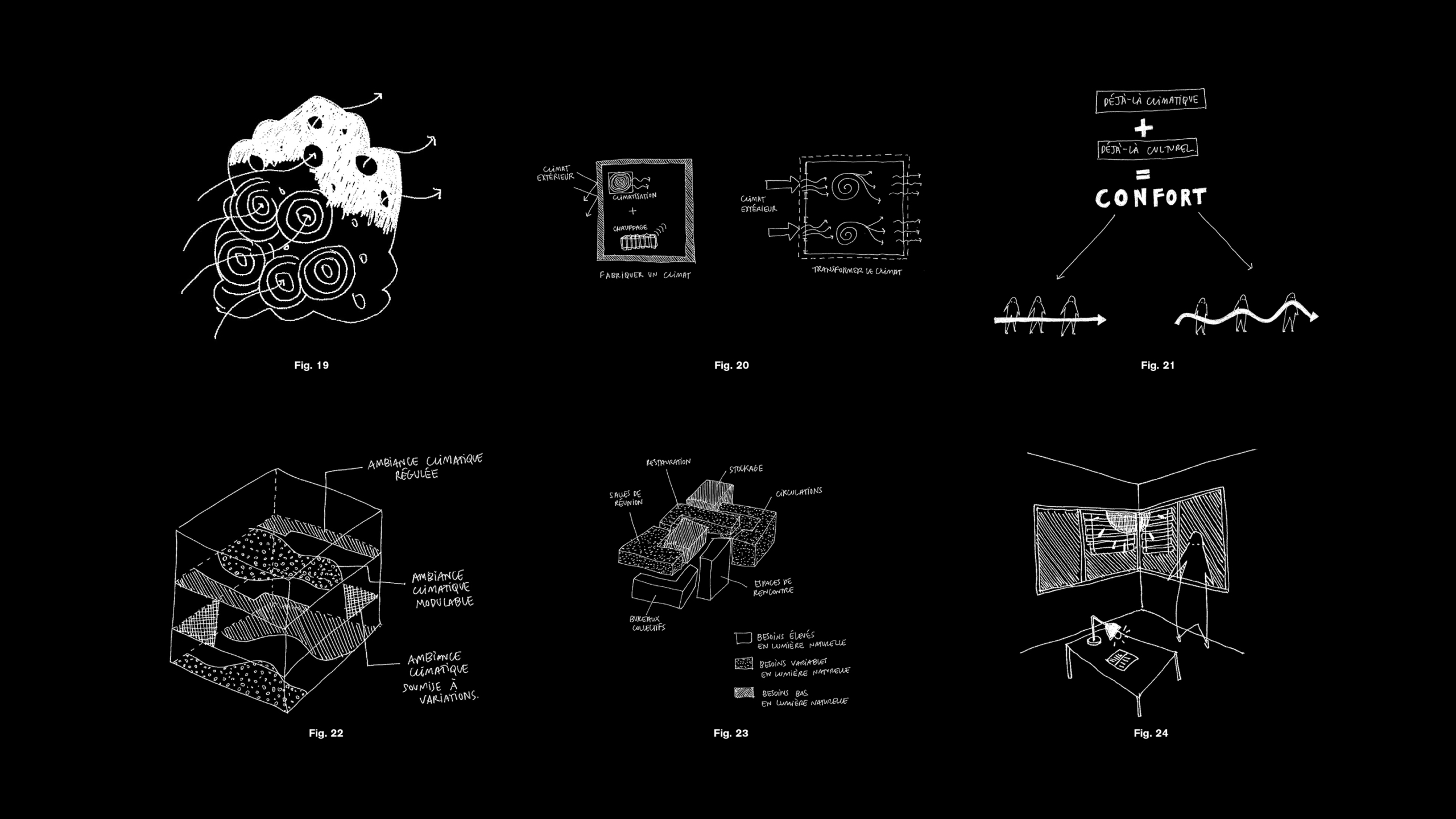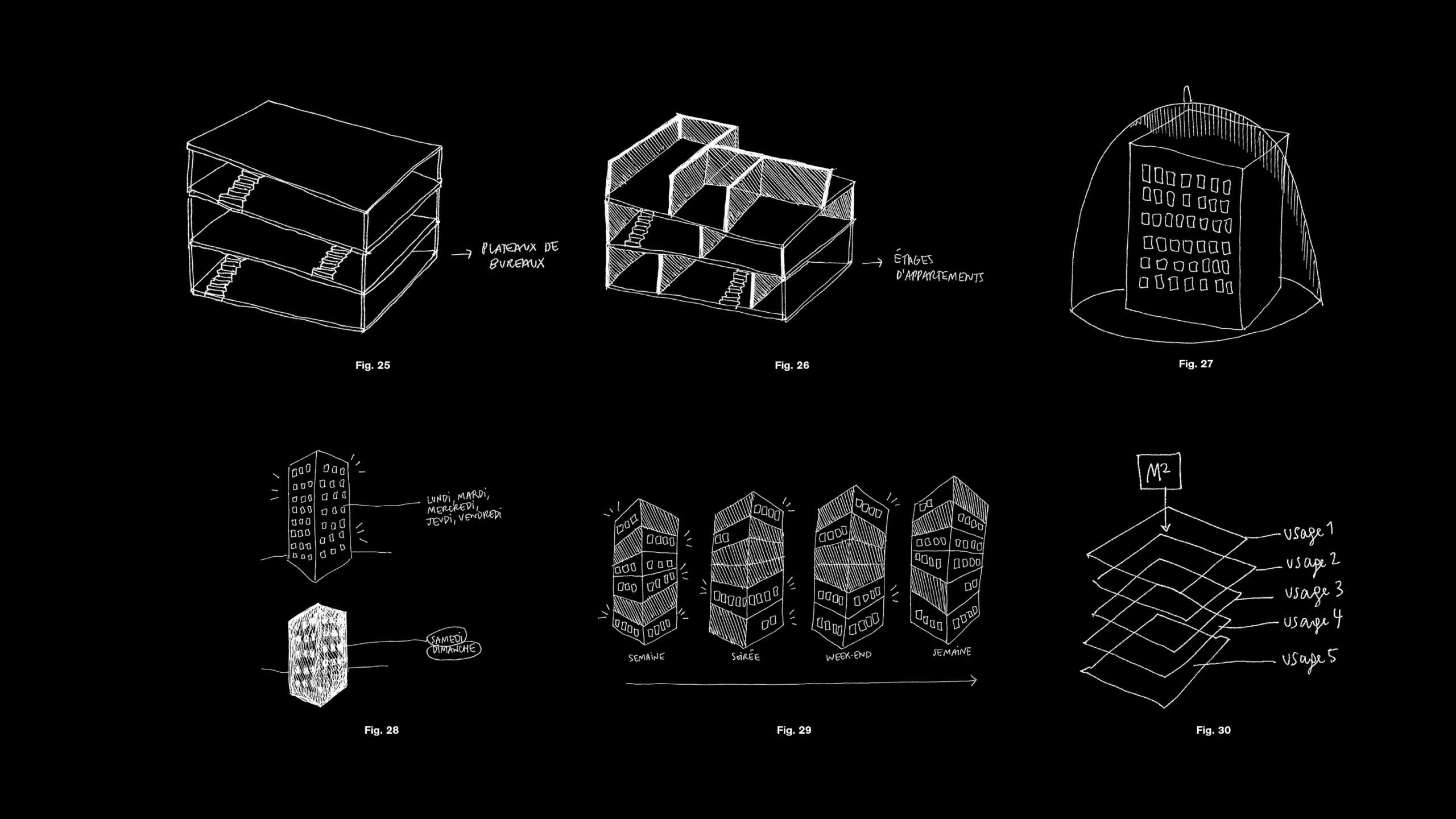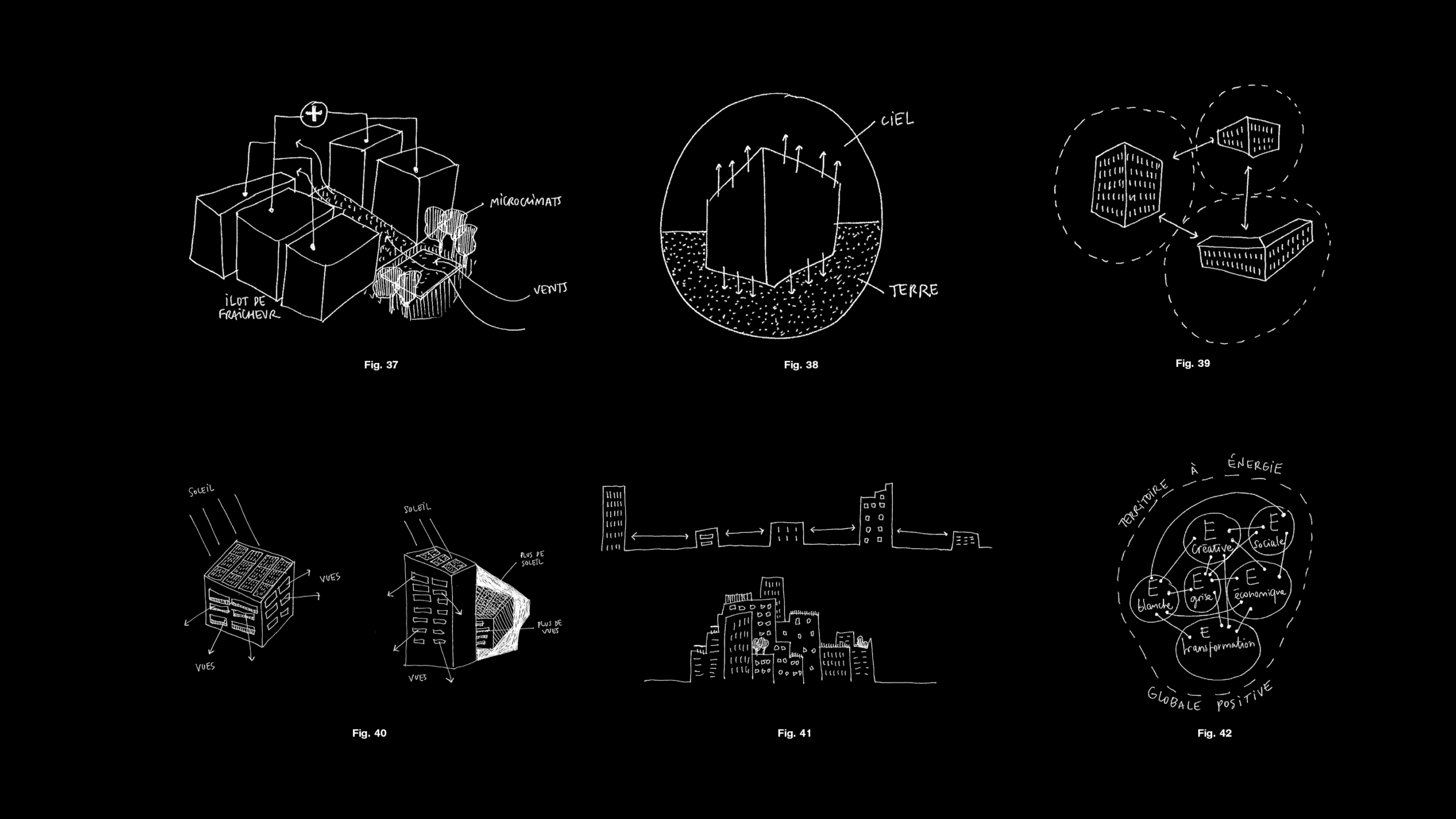«There are altogether no older, no more convinced, no more puffed-up idols—and no more hollow. That does not prevent them from being those in which people have the most faith.»
Friedrich NietzscheFriedrich Nietzsche, Twilight of Idols, How to Philosophize with a Hammer, 1888, Trad. Henri Albert.
The hyperrealism of the contemporary environmental condition
Contemporary environmental thinking can be likened to a funnel. (Fig. 1) At its outset, it is open and revolutionary, gradually hammered down under the pressure of environmental assessment methods and rating systems. Profoundly innovative in its beginnings, advocating a radical shift of paradigm, this thinking weakened until it became a hollow dogma, closing the door on any possible invention. At its core, the metaphorical funnel of sustainable development is wide: it welcomes all ideas, all disciplines and all discoveries. It offers a complete rethinking of how to produce, to dream and to create. And then it narrowed when laws were used to prescribe guarantees of compliance and number goals. At its end, the funnel is only a narrow path without perspective or light. Sustainability needed to comply with unambiguous solutions. But in terms of a global ambition, triple glazing or eight inches of insulation provide a disguise. Labels and certifications, reference texts written off-site and out of context, kill environmental thinking. They lock them up in poor and preconceived solutions, often totally unsuited to real needs. (Fig.2)
At the heart of the magazine Stream, one can find all the current conditions of architectural commissions. They dictate that projects fit into a legislative and administrative framework. Ecology is a political reality; the depletion of resources an economic argument. If we take the idea of Lacan, «production», like reality, «is when one hits oneself.» It is this which marks the contours of the possible and the impossible. «Creation» is fed by the imagination; it is this energy that guides inventors of all kinds. It is limitless. It allows itself to dream of the absolute and to fantasize about a perpetual questioning of established patterns. Creation evolves in a propensity for innovation and renewal. At the junction of the real and of the imaginary, part of contemporary architecture seems to have chosen the way of realism, or even, hyper-realism. Rather than inventing a new compromise between the binding conditions of production and innovative ideas, it embraces prescribed solutions without blinking. The environmental standards HQE, H&E, BREEAM, LEED, confine the narrow contours of an architecture, one that is terrified of not obtaining its sacrosanct certification. This hyper-realist conception is transforming simple tools or transient models into real idols. (Fig. 3)
Voluntarily or involuntarily, those buildings have worsened reality itself, freezing and exacerbating it. Instead of trying to transform it, they idolize it and display it. They are the product of figures that do not accept questioning. BEPOS, BBC, HQE, BREEAM, LEED are shields that developers, politicians and designers brandish to justify the validity of their approach. (Fig. 4) The actor of the production says to the architect: «We must do that» and he or she obeys without batting an eye. Why do they not answer: «Until proven otherwise?» The end of an intelligent environmental approach cannot avoid innovation and must challenge established patterns. Temporary and ad hoc solutions cannot become universal standards. In order to open up the narrow impasse into which sustainable development has sunk, we must advocate a hammer-blow philosophy (Fig. 5): break down current idols so as to «devise non equivocal» work methodologies; manufacture experimental operations in the form of a Trojan Horse. If they are sufficiently relevant, they will submit the «production» to «creation» and allow a change in direction. (Fig.6)
Finally, the hyper-realism of the contemporary environmental condition is in the grip of a major peril. In a desperate desire to override nature—inherently indeterminable—and man’s relationship to it, what resolutions can we not undo? What strict landscapes are we drawing without thinking to a future and a necessary evolution? What values are we outlining and what project of society do we wish to uphold?
